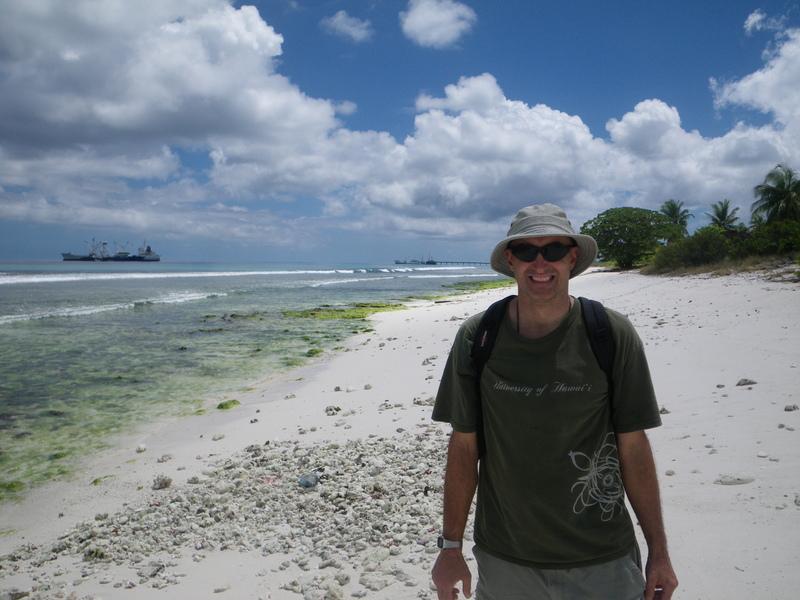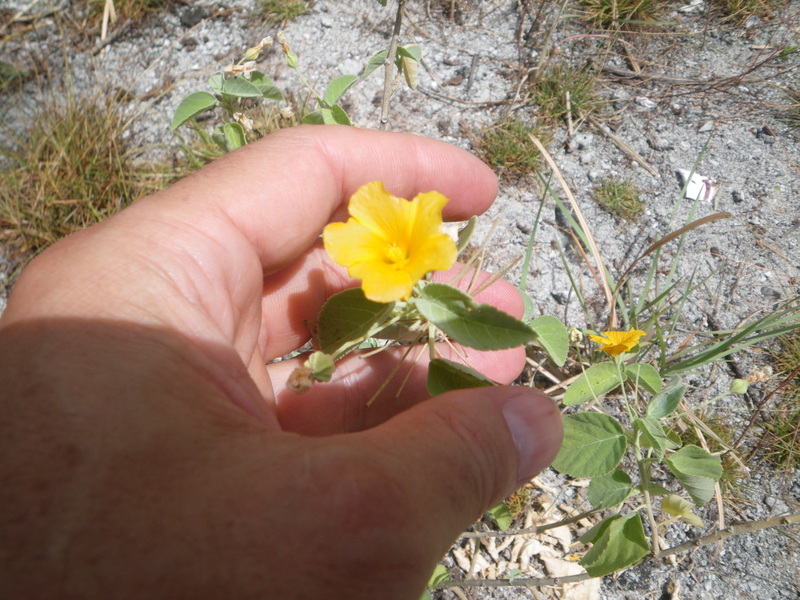
Apparently, a foreigner traveling on the Kwai to Fanning and Washington islands is not very common. I say this because it took the immigration office 2 hours to figure out what to do with me, and even more so with a shark researcher who is going to spend two-three months on Washington island. In the end, they did not make any notations in my passport, instead giving me a letter for the police on the two islands, letting them know that my travel is approved.
On the way back from the immigration office, I walked, so I got to see a bit of the landscape and how people live.
I mentioned a few trees in yesterday's blog -- coconuts, beach almonds, and ironwoods. On this walk I saw a variety of other plants. Some are native to Hawaii, and I would imagine are native here too: Kou (Cordia subcordata), Hala (Pandanus), Naupaka (Scaevola Taccada), Ilima (Sida fallax), and a grass whose name I am not sure of, but may be Digitaria. There are also other grasses that I did not recognize.
I believe the next picture shows an Ilima, the flower of Oahu and apparently many other places.

In Hawaii, a number of plants were brought on canoes by the polynesian settlers. The same plants are probably canoe plants here too: Ulu (breadfruit), Noni, Banana, as well as the ubiquitous Niu (coconut). One plant that is now common in Hawaii but was imported after western contact is the Beach Heliotrope, fairly common here, but I have no idea if it is native. Pandanus may also be a canoe plant here: in Hawaii the fruits are barely edible (only used as famine food), but here they are considered delicious. The next picture shows a Pandanus.
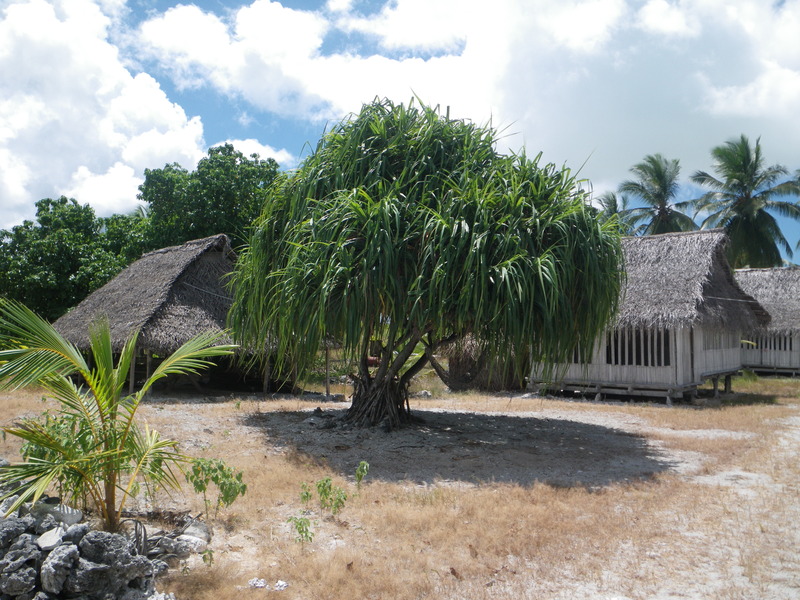
Other plants were almost certainly introduced here after western contact, and they include ubiquitous papaya, several decorative flowers (perhaps one might be Impatiens), and the beach almond.
I believe the next picture shows a beach heliotrope.
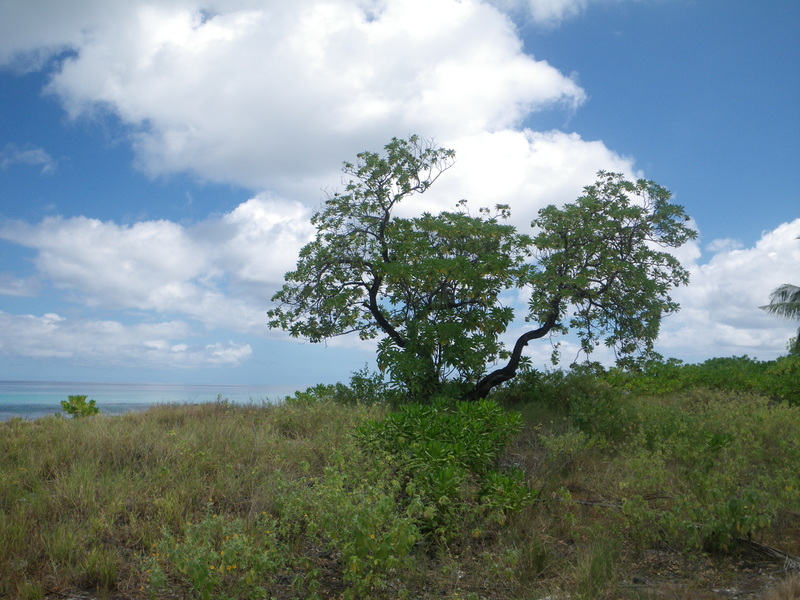
Pigs in Hawaii are large, wild, and generally derived from European stock. Pigs in Polynesia (and pre-contact Hawaii) are small and stay close to home. Pigs here are definitely small.

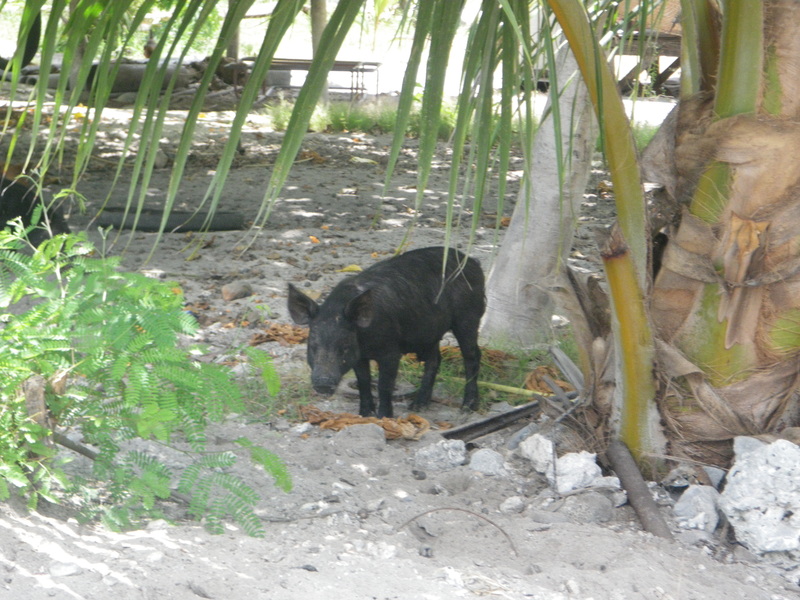
The structures I saw in my walk ranged from concrete to thatch roof.
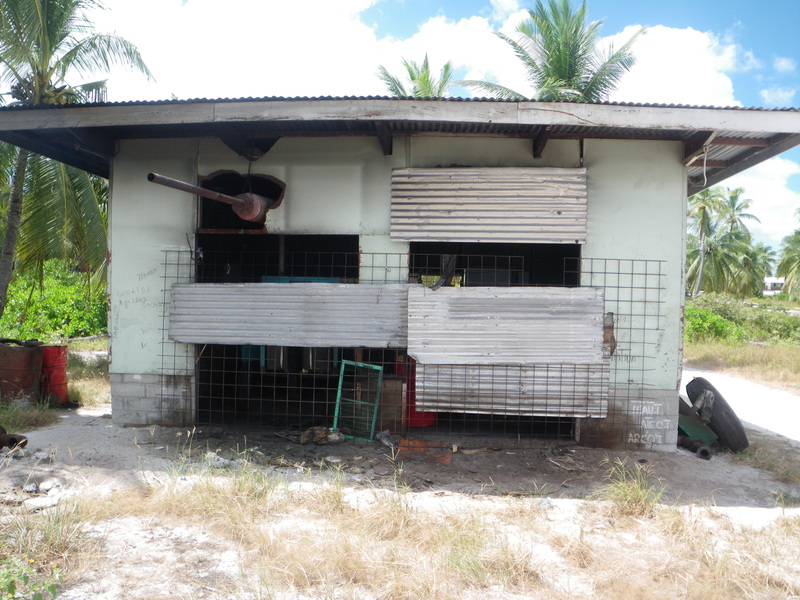
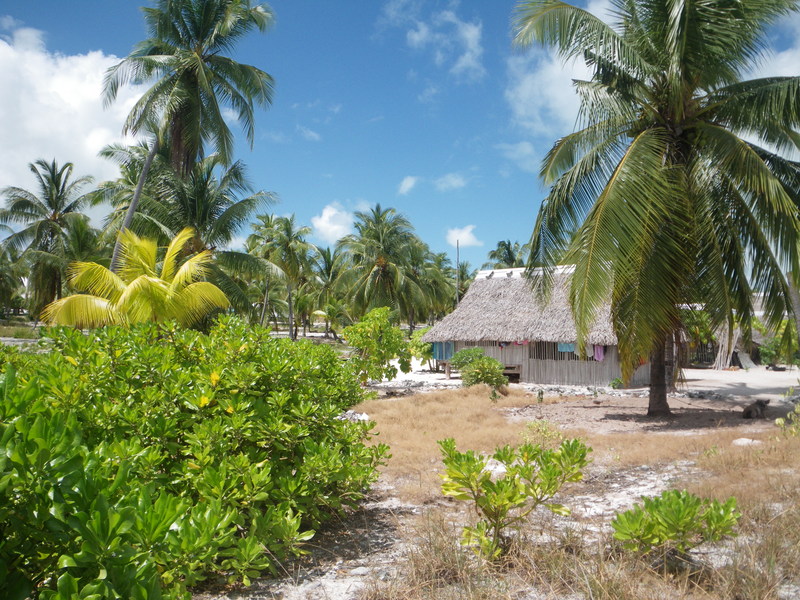
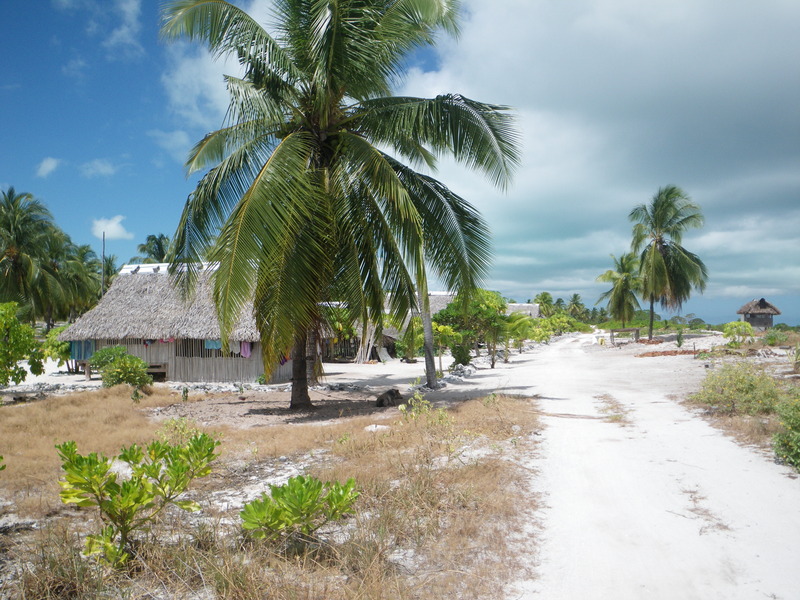
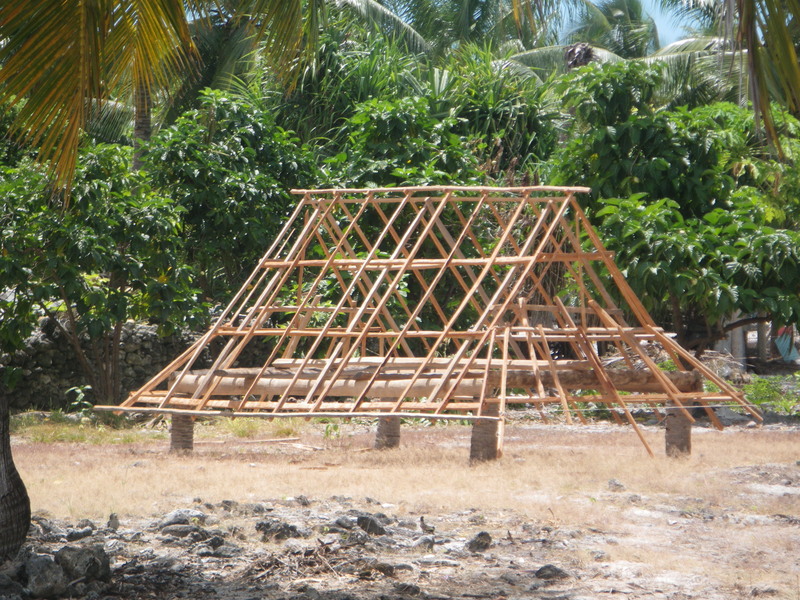
Some of the signs around town are interesting.
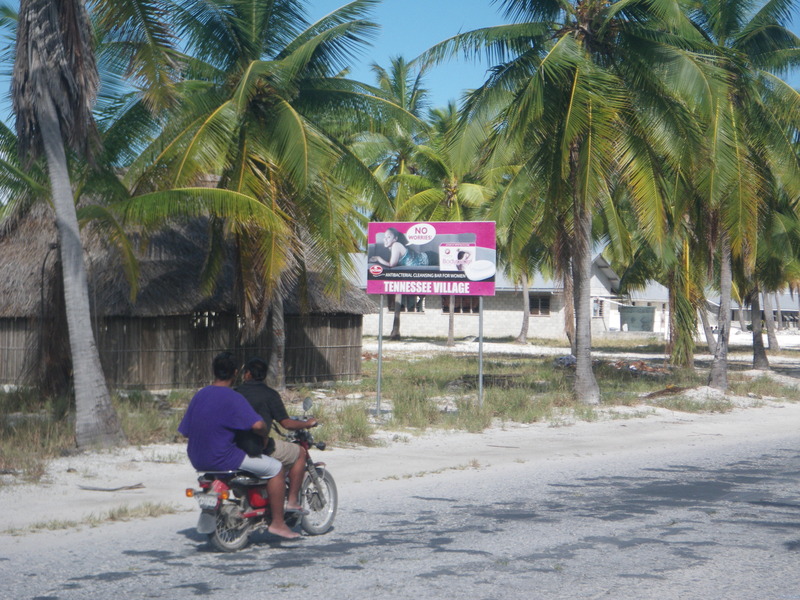
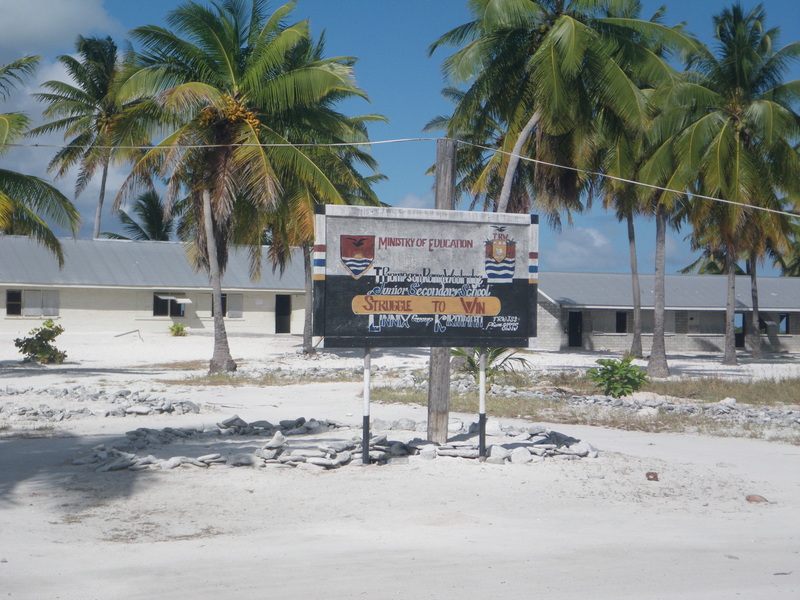
A school I walked past had a soccer field with a beautiful view.
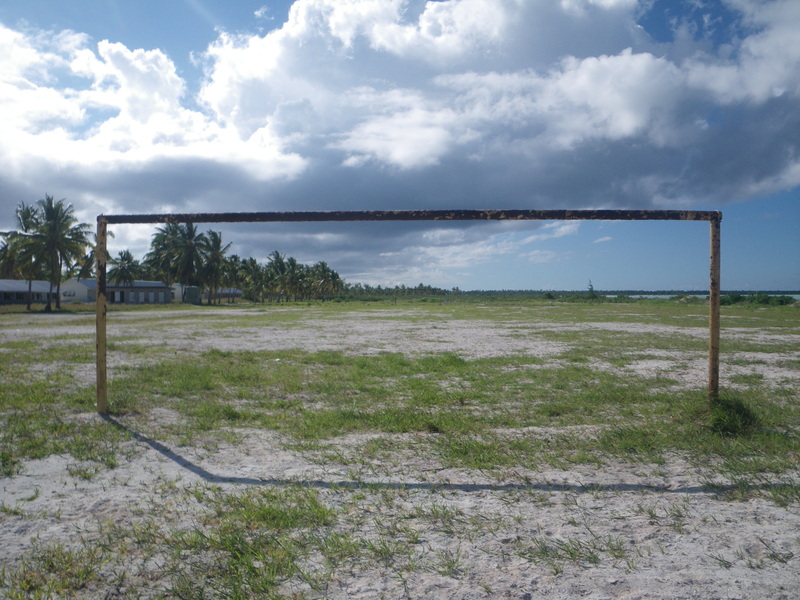
An atoll such as Christmas island has a ring of sandy soil surrounding a lagoon. The soccer field is next to the lagoon.
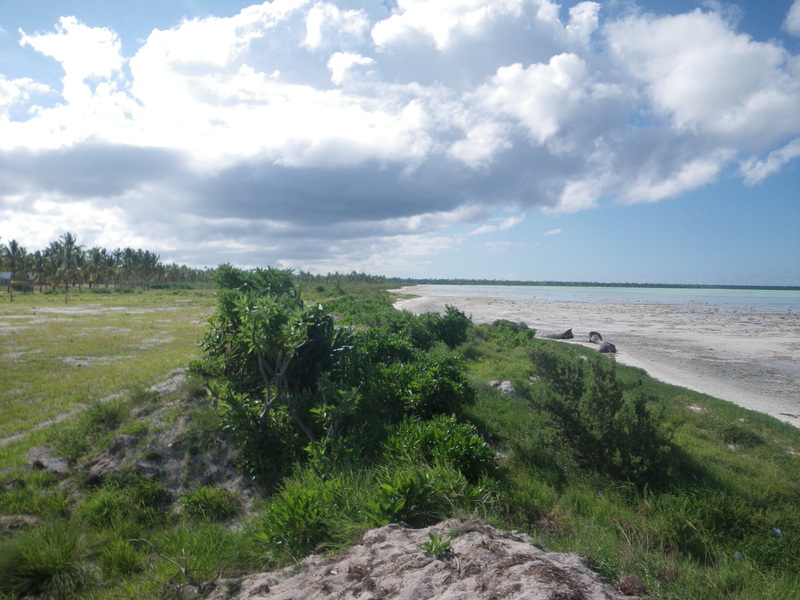

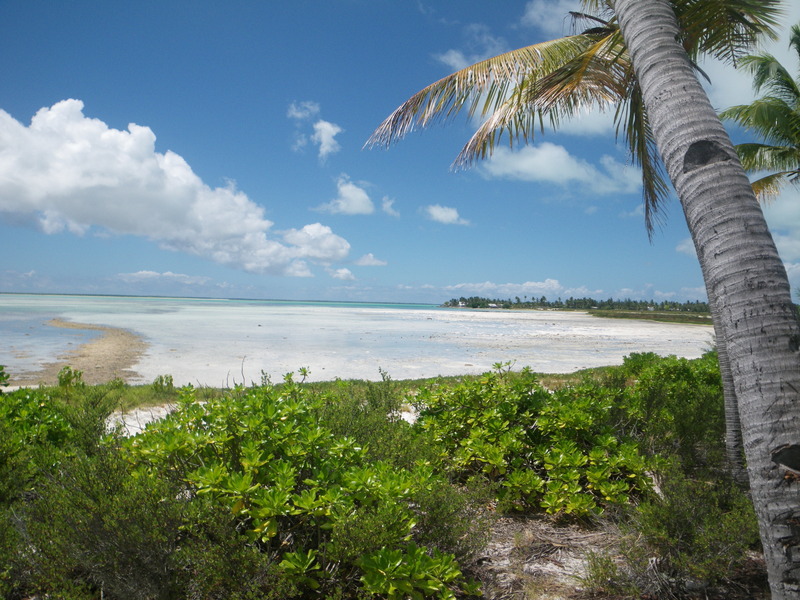
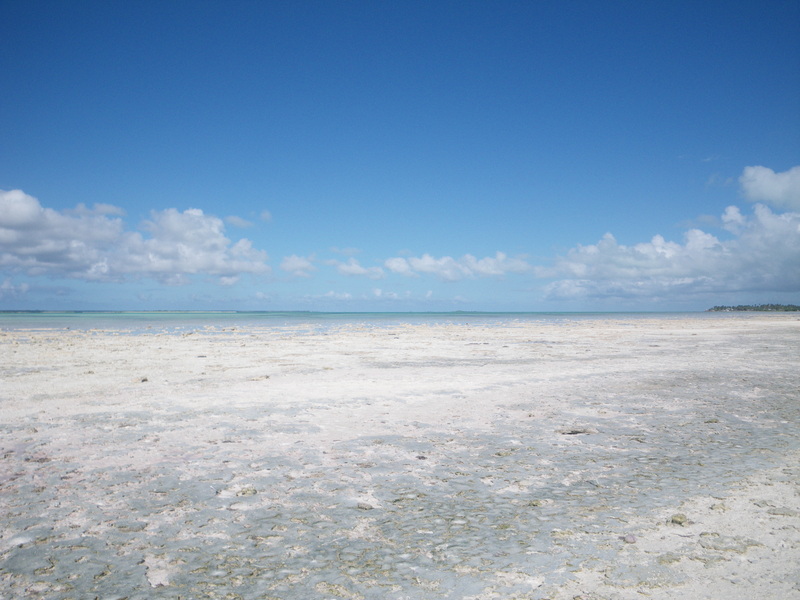
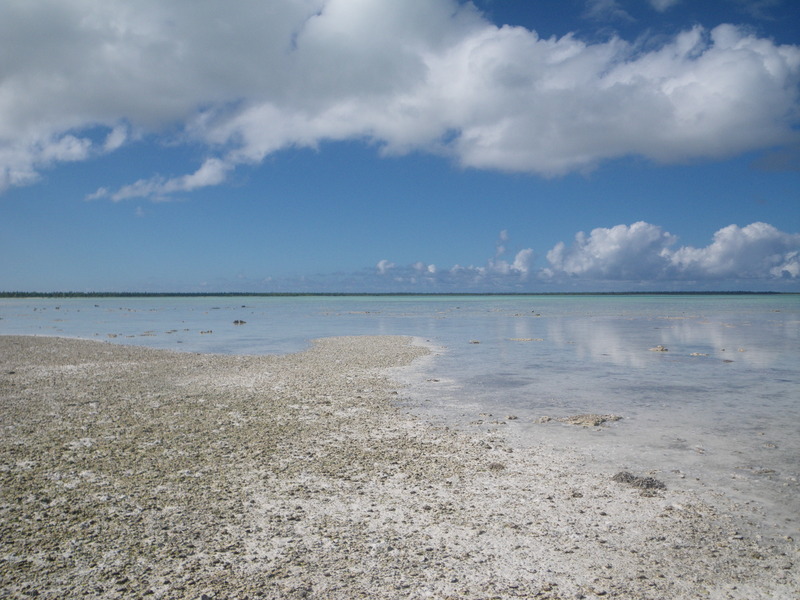
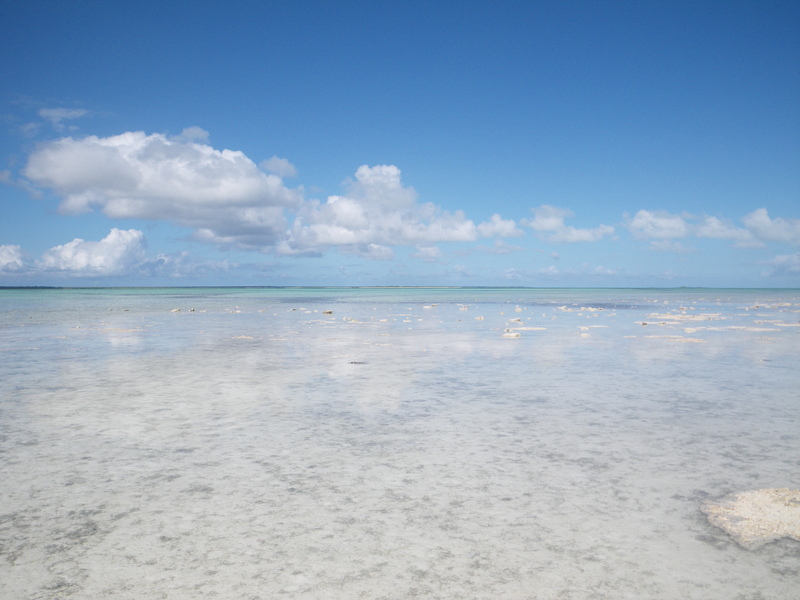
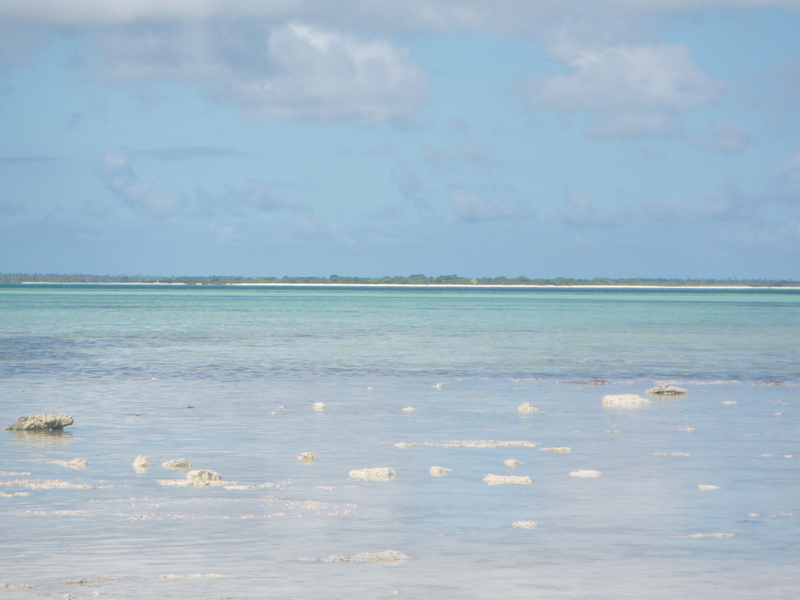
There was a coconut tree trunk in the lagoon.
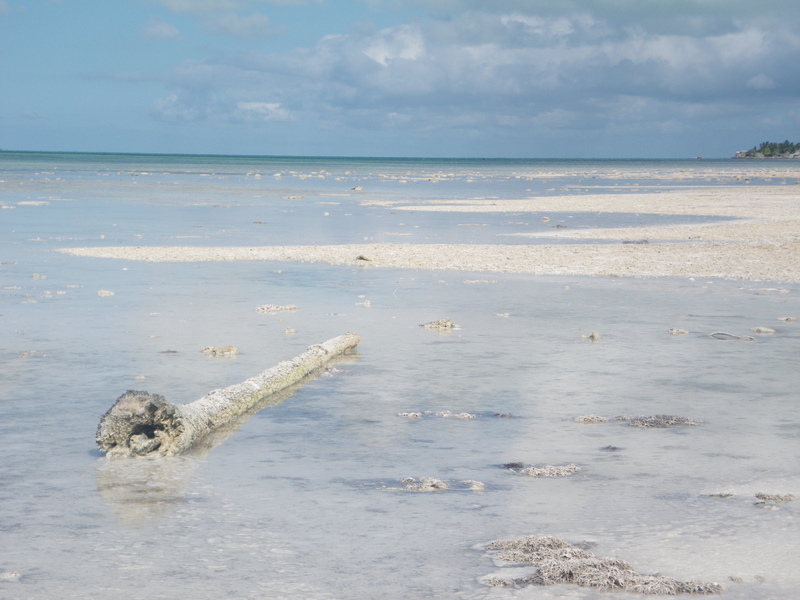
And another strange corroded structure.
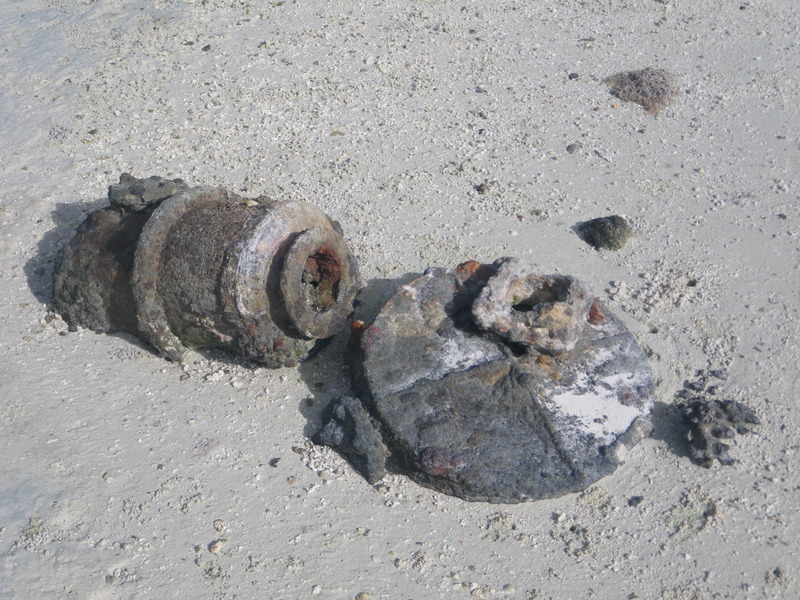
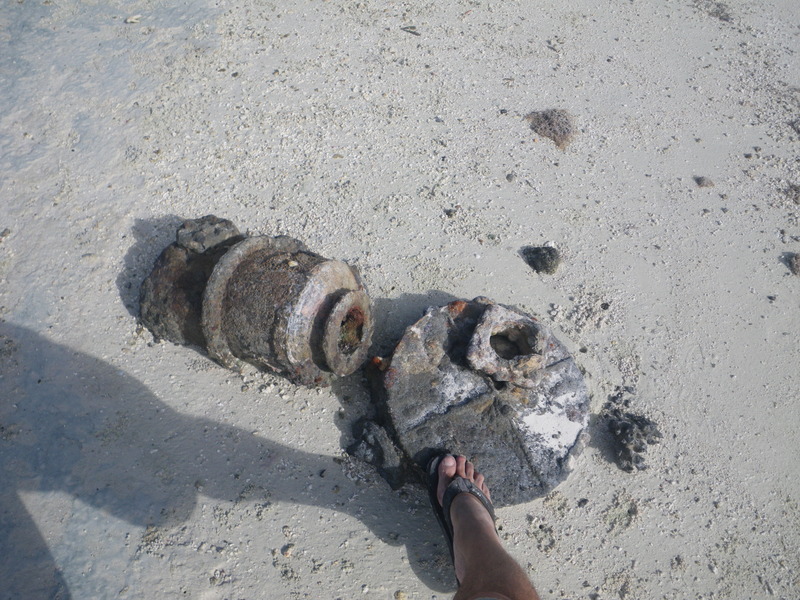
Christmas island also has several ponds.
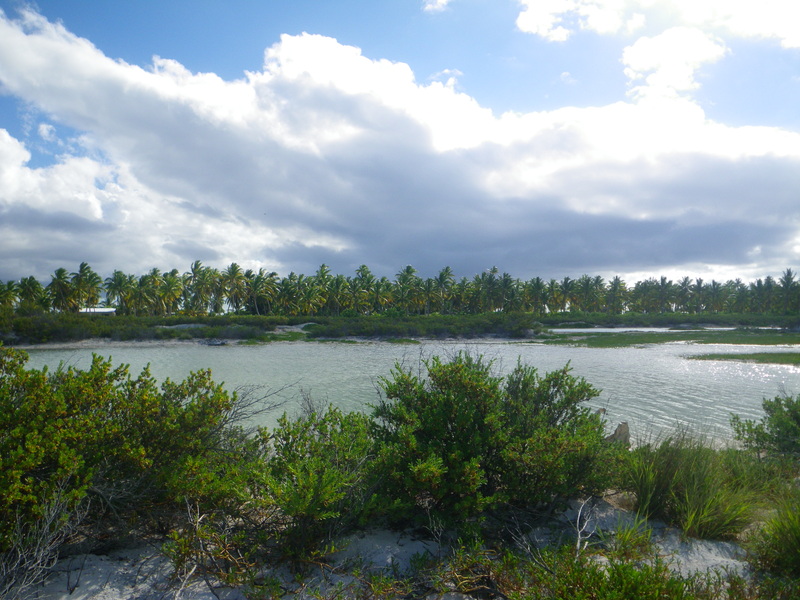
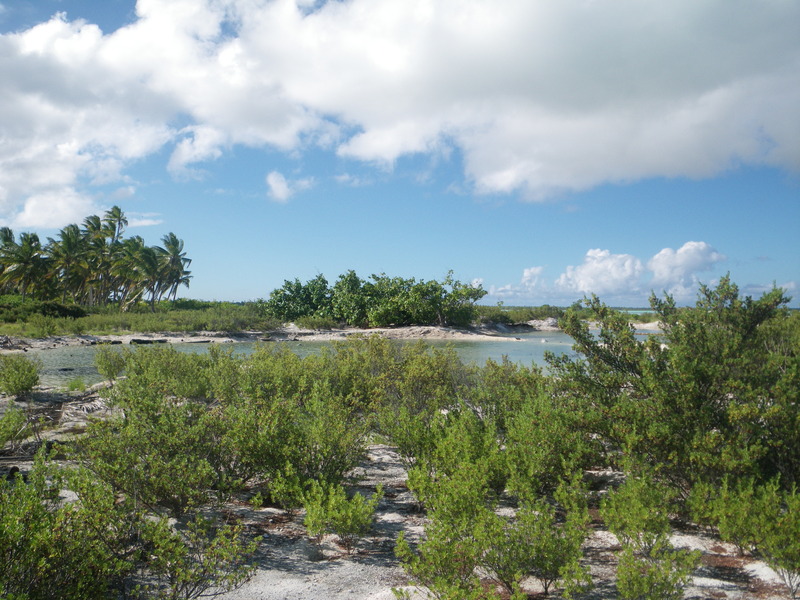
There is one major paved road going around the island, between the ocean and the lagoon.
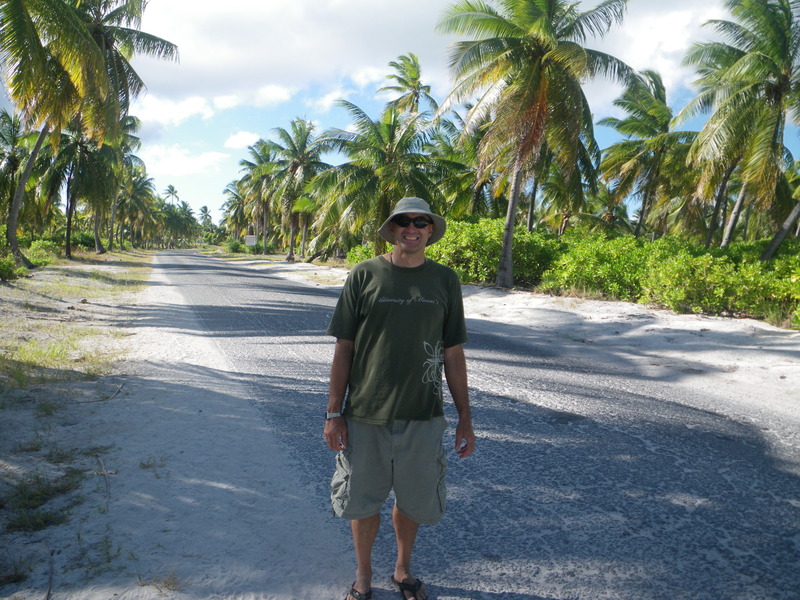
The ocean side of the island has a nice sandy beach with a rocky shore.
